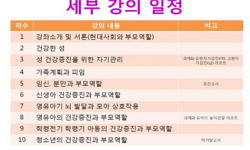이 연구는 부모의 훈육태도 유형이 아동의 친구관계와 상관이 있는지를 알아보고자 하였다. 연구대상은 서울에 있는 1개 초등학교 4, 5, 6학년 남녀 학생 343명과 그 학부모들이다. 연구방법...
http://chineseinput.net/에서 pinyin(병음)방식으로 중국어를 변환할 수 있습니다.
변환된 중국어를 복사하여 사용하시면 됩니다.
- 中文 을 입력하시려면 zhongwen을 입력하시고 space를누르시면됩니다.
- 北京 을 입력하시려면 beijing을 입력하시고 space를 누르시면 됩니다.
부모의 훈육태도와 아동의 친구관계 간의 상관연구 = (A) correlational study on the relation between parents' disciplinary attitude and children's peer relationship
한글로보기https://www.riss.kr/link?id=T8374377
- 저자
-
발행사항
서울 : 연세대학교 교육대학원, 2002
-
학위논문사항
학위논문(석사) -- 연세대학교 교육대학원 , 상담교육전공 , 2002. 8
-
발행연도
2002
-
작성언어
한국어
-
주제어
부모 ; 훈육태도 ; 아동 ; 친구관계 ; parents ; disciplinary attitude ; children ; peer relationship
-
KDC
375.2261 판사항(4)
-
발행국(도시)
서울
-
형태사항
55, 2, 4p. : 도표 ; 26 cm.
-
일반주기명
지도교수: 이성훈
- 소장기관
-
0
상세조회 -
0
다운로드
부가정보
국문 초록 (Abstract)
연구방법은 아동들에게 친구관계에 관한 설문지에 답하게 하고, 그 부모들에게는 훈육태도에 관한 설문지에 답하게 하여, 부모의 훈육태도와 아동의 친구관계가 상관이 있는지를 알아보았다. 부모의 훈육태도는 단호한 훈육태도, 공격적 훈육태도, 수동적 훈육태도의 3가지로 분류하여 설문지에 가장 많이 응답한 훈육태도를 그 부모의 훈육태도로 정하였다.
연구결과는 다음과 같다.
부모의 인구통계학적 변인 중 학력, 직업, 동거여부, 직장유무는 부모의 훈육태도와 상관이 없다. 또한 자녀의 학년, 성별, 형제의 수 역시 부모의 훈육태도와는 상관이 없다. 반면에 조부모 중 할아버지의 동거여부는 부모의 훈육태도와 관계가 있고, 할아버지와 함께 사는 경우보다 할아버지와 함께 살지않는 경우에 부모의 훈육태도가 더 단호한 반면 부모의 공격적인 훈육태도는 할아버지와 함께 살지 않는 경우보다 할아버지와 함께 사는 경우에 더 높다. 아동의 성별이 친구관계와 상관이 있는지를 연구한 결과, 여자 아동들이 남자 아동들 보다 친구관계 점수가 더 높아 여자 아동들이 친구관계에 있어서 더 긍정적이었다.
아동의 형제의 수가 친구관계와 상관이 있는지를 연구한 결과, 외동이들보다 형제의 수가 2명 이상인 경우에 친구관계 점수가 더 높아 친구관계에 있어서 더 긍정적이었다. 부모의 동거여부가 친구관계가 상관이 있는지를 연구한 결과, 부모의 동거여부가 아동의 친구관계와 밀접한 상관이 있었다. 즉, 부모 모두와 같이 사는 아동들이 부 또는 모와만 사는 아동들보다 친구관계 점수가 더 높아 친구관계에 있어서 더 긍정적인 것으로 나타났다.
아동의 친구관계 점수는 공격적 훈육태도, 단호한 훈육태도, 수동적 훈육태도의 순으로 높게 나타났다. 그리고, 부모의 훈육태도 중 공격적 훈육태도로 키운 아동의 친구관계와 수동적 훈육태도로 키운 아동의 친구관계 사이에 유의미한 차이가 있는 것으로 나타났다. 즉, 공격적 훈육태도로 키운 아동의 친구관계가 수동적 훈육태도로 키운 아동의 친구관계 보다 친구관계 점수가 더 높아, 공격적 훈육태도로 키운 아동이 수동적 훈육태도로 키운 아동보다 친구관계가 더 좋은 것으로 나타났다.
이 연구 결과를 토대로 앞으로 계속 추구해 나갈 문제점과 전망을 살펴보면 다음과 같다.
첫째, 부모의 훈육태도를 공격형, 단호형, 수동형으로 제한하여 연구하였는데 다른 변인들과 관련도 분석해 보고 좀 더 다른 분류 방법으로도 연구해 볼 필요가 있다.
둘째, 부모의 훈육태도를 측정할 때 설문지에 아동의 이름을 적게 함으로써 답변의 진실성이 떨어졌다. 설문지에 이름을 적지 않으면서 아동의 설문지와 짝지을 수 있는 다른 방법이 요구된다.
셋째, 아동의 친구관계가 설문지를 통해 조사됨으로써, 아동의 실제 친구관계가 측정되지 못했고, 아동이 지각한 친구관계가 측정되었다. 실제 친구관계를 묻는 설문지라든가 실제 친구관계를 측정할 수 있는 방법이 요구된다.
넷째, 비록 이 연구에서는 아버지와 어머니를 구분하지 않은 설문지를 사용하였으나, 아버지와 어머니의 훈육태도를 따로 작성하여 각각의 특성을 살펴보면 더 효과적이라고 본다.
다섯째, 본 연구에서는 조사 연구의 어려움 때문에 표집 대상을 한 학교로만 제한하였으나, 강북과 강남으로 구분하여 지역에 따른 연구를 할 필요가 있다.
이 연구는 부모의 훈육태도 유형이 아동의 친구관계와 상관이 있는지를 알아보고자 하였다. 연구대상은 서울에 있는 1개 초등학교 4, 5, 6학년 남녀 학생 343명과 그 학부모들이다.
연구방법은 아동들에게 친구관계에 관한 설문지에 답하게 하고, 그 부모들에게는 훈육태도에 관한 설문지에 답하게 하여, 부모의 훈육태도와 아동의 친구관계가 상관이 있는지를 알아보았다. 부모의 훈육태도는 단호한 훈육태도, 공격적 훈육태도, 수동적 훈육태도의 3가지로 분류하여 설문지에 가장 많이 응답한 훈육태도를 그 부모의 훈육태도로 정하였다.
연구결과는 다음과 같다.
부모의 인구통계학적 변인 중 학력, 직업, 동거여부, 직장유무는 부모의 훈육태도와 상관이 없다. 또한 자녀의 학년, 성별, 형제의 수 역시 부모의 훈육태도와는 상관이 없다. 반면에 조부모 중 할아버지의 동거여부는 부모의 훈육태도와 관계가 있고, 할아버지와 함께 사는 경우보다 할아버지와 함께 살지않는 경우에 부모의 훈육태도가 더 단호한 반면 부모의 공격적인 훈육태도는 할아버지와 함께 살지 않는 경우보다 할아버지와 함께 사는 경우에 더 높다. 아동의 성별이 친구관계와 상관이 있는지를 연구한 결과, 여자 아동들이 남자 아동들 보다 친구관계 점수가 더 높아 여자 아동들이 친구관계에 있어서 더 긍정적이었다.
아동의 형제의 수가 친구관계와 상관이 있는지를 연구한 결과, 외동이들보다 형제의 수가 2명 이상인 경우에 친구관계 점수가 더 높아 친구관계에 있어서 더 긍정적이었다. 부모의 동거여부가 친구관계가 상관이 있는지를 연구한 결과, 부모의 동거여부가 아동의 친구관계와 밀접한 상관이 있었다. 즉, 부모 모두와 같이 사는 아동들이 부 또는 모와만 사는 아동들보다 친구관계 점수가 더 높아 친구관계에 있어서 더 긍정적인 것으로 나타났다.
아동의 친구관계 점수는 공격적 훈육태도, 단호한 훈육태도, 수동적 훈육태도의 순으로 높게 나타났다. 그리고, 부모의 훈육태도 중 공격적 훈육태도로 키운 아동의 친구관계와 수동적 훈육태도로 키운 아동의 친구관계 사이에 유의미한 차이가 있는 것으로 나타났다. 즉, 공격적 훈육태도로 키운 아동의 친구관계가 수동적 훈육태도로 키운 아동의 친구관계 보다 친구관계 점수가 더 높아, 공격적 훈육태도로 키운 아동이 수동적 훈육태도로 키운 아동보다 친구관계가 더 좋은 것으로 나타났다.
이 연구 결과를 토대로 앞으로 계속 추구해 나갈 문제점과 전망을 살펴보면 다음과 같다.
첫째, 부모의 훈육태도를 공격형, 단호형, 수동형으로 제한하여 연구하였는데 다른 변인들과 관련도 분석해 보고 좀 더 다른 분류 방법으로도 연구해 볼 필요가 있다.
둘째, 부모의 훈육태도를 측정할 때 설문지에 아동의 이름을 적게 함으로써 답변의 진실성이 떨어졌다. 설문지에 이름을 적지 않으면서 아동의 설문지와 짝지을 수 있는 다른 방법이 요구된다.
셋째, 아동의 친구관계가 설문지를 통해 조사됨으로써, 아동의 실제 친구관계가 측정되지 못했고, 아동이 지각한 친구관계가 측정되었다. 실제 친구관계를 묻는 설문지라든가 실제 친구관계를 측정할 수 있는 방법이 요구된다.
넷째, 비록 이 연구에서는 아버지와 어머니를 구분하지 않은 설문지를 사용하였으나, 아버지와 어머니의 훈육태도를 따로 작성하여 각각의 특성을 살펴보면 더 효과적이라고 본다.
다섯째, 본 연구에서는 조사 연구의 어려움 때문에 표집 대상을 한 학교로만 제한하였으나, 강북과 강남으로 구분하여 지역에 따른 연구를 할 필요가 있다.
다국어 초록 (Multilingual Abstract)
The children were asked to fill out the questionnaires designed to measure peer relationship, and their parents were asked to give answer to the questionnaires concerning disciplinary attitude. And then whether there were any connections between parent disciplinary attitude and child peer relationship was examined. The parent disciplinary attitude were divided into three: determined, aggressive and passive ones. And the disciplinary attitude each of the parents most widely responded to was selected as his or her dominant disciplinary attitude.
The findings of this study were as below:
Among parent demographic variables, disciplinary attitude had nothing to do with educational background, occupation, whether or not they lived with their children, or whether or not they were working. The disciplinary attitude had no relations with child school year, child gender or the number of child siblings, either. On the contrary, whether their children's grandfather lived with them together had some bearings on parent disciplinary attitude. The parents who didn't dwell with their children's grandfathers under the same roof took a more determined attitude than those who did, but the latter group showed more aggressive attitude than the former group.
As a result of looking into connections between child gender and peer relationship, the girl children scored better in peer relationship than the boys. This implied that the girl children got along with their friends better.
When the correlation between the number of siblings and peer relationship was investigated, the children who had two or more siblings got higher score in peer relations than those who were an only child in their families, and this fact signified that the former group had better relationship with their friends. Regarding connections between peer relationship and whether or not they lived with parents, there appeared a close relationship between the two. Those who lived with both parents together scored higher than the others who only lived with one of them, which indicated the former group kept better relationship with their friends.
The order of score of children's peer-relationship was aggressive-discipline, assertive-discipline, nonassertive-discipline. And significant differences were found between aggressive-discipline children and nonassertive-discipline children in their friend-relationship. In other words, aggressive-discipline children got higher score in their friend-relationship and had better relations with friends.
Based on the findings above we discussed the necessity of further study on not friend-relationship that children cognize but real children's peer-relationship.
There are several challenges to be addressed in the future:
First, this study only focused on aggressive, determined and passive styles among parent disciplinary attitudes. It's needed to turn our eyes into their relationship with other variables or other types of disciplinary attitudes.
Second, the children were asked to write down their names on the questionnaires when parent disciplinary attitude was measured, and this resulted in deteriorating the reliability of their answers. How to discern between respondents and their answer sheets without having them record their names on them should be studied.
Third, the children's peer relationship was tested by the questionnaire method, and no further action to make a more objective evaluation was taken. As a consequence, it's just possible to find out how their peer relationship was perceived by themselves. A more accurate method to track their actual peer relationship is called for.
Fourth, the survey was conducted without separating the father group from the mother group, but it seems better to carry out separate survey on the two groups to figure out each group's characteristics.
Fifth, the subjects in this study were confined to the children from a school since it's not available to cover more schools. It's necessary to take a look at different geographic regions, especially Gangbuk and Gangnam areas.
This study intented to knowing that the relation between parents' disciplinary attitude and children's peerre ationship. The object of this study were 343 children in public elementary school in Seoul (4th, 5th, 6th grade) and their parents. The chil...
This study intented to knowing that the relation between parents' disciplinary attitude and children's peerre ationship. The object of this study were 343 children in public elementary school in Seoul (4th, 5th, 6th grade) and their parents.
The children were asked to fill out the questionnaires designed to measure peer relationship, and their parents were asked to give answer to the questionnaires concerning disciplinary attitude. And then whether there were any connections between parent disciplinary attitude and child peer relationship was examined. The parent disciplinary attitude were divided into three: determined, aggressive and passive ones. And the disciplinary attitude each of the parents most widely responded to was selected as his or her dominant disciplinary attitude.
The findings of this study were as below:
Among parent demographic variables, disciplinary attitude had nothing to do with educational background, occupation, whether or not they lived with their children, or whether or not they were working. The disciplinary attitude had no relations with child school year, child gender or the number of child siblings, either. On the contrary, whether their children's grandfather lived with them together had some bearings on parent disciplinary attitude. The parents who didn't dwell with their children's grandfathers under the same roof took a more determined attitude than those who did, but the latter group showed more aggressive attitude than the former group.
As a result of looking into connections between child gender and peer relationship, the girl children scored better in peer relationship than the boys. This implied that the girl children got along with their friends better.
When the correlation between the number of siblings and peer relationship was investigated, the children who had two or more siblings got higher score in peer relations than those who were an only child in their families, and this fact signified that the former group had better relationship with their friends. Regarding connections between peer relationship and whether or not they lived with parents, there appeared a close relationship between the two. Those who lived with both parents together scored higher than the others who only lived with one of them, which indicated the former group kept better relationship with their friends.
The order of score of children's peer-relationship was aggressive-discipline, assertive-discipline, nonassertive-discipline. And significant differences were found between aggressive-discipline children and nonassertive-discipline children in their friend-relationship. In other words, aggressive-discipline children got higher score in their friend-relationship and had better relations with friends.
Based on the findings above we discussed the necessity of further study on not friend-relationship that children cognize but real children's peer-relationship.
There are several challenges to be addressed in the future:
First, this study only focused on aggressive, determined and passive styles among parent disciplinary attitudes. It's needed to turn our eyes into their relationship with other variables or other types of disciplinary attitudes.
Second, the children were asked to write down their names on the questionnaires when parent disciplinary attitude was measured, and this resulted in deteriorating the reliability of their answers. How to discern between respondents and their answer sheets without having them record their names on them should be studied.
Third, the children's peer relationship was tested by the questionnaire method, and no further action to make a more objective evaluation was taken. As a consequence, it's just possible to find out how their peer relationship was perceived by themselves. A more accurate method to track their actual peer relationship is called for.
Fourth, the survey was conducted without separating the father group from the mother group, but it seems better to carry out separate survey on the two groups to figure out each group's characteristics.
Fifth, the subjects in this study were confined to the children from a school since it's not available to cover more schools. It's necessary to take a look at different geographic regions, especially Gangbuk and Gangnam areas.
목차 (Table of Contents)
- - 목차 -
- ◈ 국문요약
- Ⅰ. 서론 = 1
- 1. 연구의 필요성 = 1
- 2. 연구의 목적 = 4
- - 목차 -
- ◈ 국문요약
- Ⅰ. 서론 = 1
- 1. 연구의 필요성 = 1
- 2. 연구의 목적 = 4
- 3. 연구의 문제 = 4
- Ⅱ. 이론적 배경 = 5
- 1. 부모의 훈육태도 = 5
- 가. 훈육의 개념 및 과정 = 5
- 나. 훈육의 방식 = 6
- 다. 비일관적인 훈육태도 = 8
- 라. 부모의 훈육방법 유형에 관한 이론 = 9
- 2. 아동의 친구관계 = 16
- 가. 친구관계의 개념 및 중요성 = 16
- 나. 친구관계의 형성 요인 = 20
- 다. 친구관계의 특성 = 22
- 라. 친구관계 특성의 개인차 = 24
- Ⅲ. 연구의 방법 및 절차 = 30
- 1. 조사 대상 = 30
- 2. 조사 도구 구성 및 내용 = 30
- 3. 통계적 처리 절차 = 33
- 4. 조사 연구의 제한점 = 33
- Ⅳ. 결과의 분석 = 35
- 1. 부모의 훈육태도 = 35
- 2. 아동의 친구관계 = 40
- 3. 부모의 훈육태도에 따른 아동의 친구관계 비교 = 43
- Ⅴ. 요약, 결론 및 제언 = 44
- 1. 요약 = 44
- 2. 결론 = 46
- 3. 제언 = 50
- 참고문헌 = 51
- 부록 = 56
- Abstract












